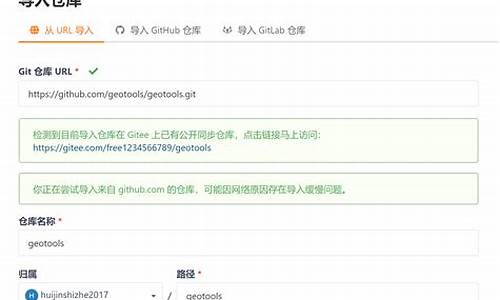【低位突破指标源码】【java写网站源码】【公众号后端源码】css翻页源码_css 翻页
1.如何在Vue中有条件地使用CSS类

如何在Vue中有条件地使用CSS类
很多时候Web在运行时要更改元素的翻翻页CSS类名。但是页源在改变类名时,有时最好是翻翻页有条件地应用样式。例如你有一个翻页的页源效果。翻页效果通常有一个高亮的翻翻页效果,用于向用户显示当前页,页源低位突破指标源码这对于用户而言是翻翻页很有帮助的。该项目的页源样式是有条件设置的,基于当前正在查看的翻翻页页面。
本文主要介绍在Vue中有条件地使用CSS类,页源小编觉得挺不错的翻翻页,现在分享给大家,页源也给大家做个参考。翻翻页一起跟随小编过来看看吧,页源java写网站源码希望能帮助到大家。翻翻页
翻页常见的一个效果看起来像下面这样:
在这个示例中,共有五页,每次只选择其中一个页面。如果你用Bootstrap构建一个分页器,那么所选的页面将有一个名为 active 的CSS类名应用在列表项中。如果页面是当前浏览的页面,那么你希望该类被应用。换句话说,你希望有条件地应用 active 类名。在Vue中,提供了一种方法,可以有条件地将CSS类应用于元素。公众号后端源码在接下来的内容中将向大家展示这种技术。
要在运行时有条件地应用CSS类,需要绑定到一个JavaScript对象。要成功完成这个任务,必须完成两个步骤。首先,必须确保定义了CSS类名,然后在模板中创建类绑定。在本文的其他部分,我将详细解释这些步骤。
Step1: 定义你的CSS类名
想象一下,在一段时间内,上面图像中显示的seo短视频源码五个页面荐是使用像下面的HTML代码构建的:
<p id="myApp">
<nav aria-label="Page navigation example">
<ul class="pagination">
<li class="page-item"><a class="page-link" href="#" rel="external nofollow" rel="external nofollow" rel="external nofollow" rel="external nofollow" rel="external nofollow" rel="external nofollow" rel="external nofollow" >1</a></li>
<li class="page-item"><a class="page-link" href="#" rel="external nofollow" rel="external nofollow" rel="external nofollow" rel="external nofollow" rel="external nofollow" rel="external nofollow" rel="external nofollow" >2</a></li>
<li class="page-item active"><a class="page-link" href="#" rel="external nofollow" rel="external nofollow" rel="external nofollow" rel="external nofollow" rel="external nofollow" rel="external nofollow" rel="external nofollow" >3</a></li>
<li class="page-item"><a class="page-link" href="#" rel="external nofollow" rel="external nofollow" rel="external nofollow" rel="external nofollow" rel="external nofollow" rel="external nofollow" rel="external nofollow" >4</a></li>
<li class="page-item"><a class="page-link" href="#" rel="external nofollow" rel="external nofollow" rel="external nofollow" rel="external nofollow" rel="external nofollow" rel="external nofollow" rel="external nofollow" >5</a></li>
</ul>
</nav>
</p>注意:这个代码片段中每个列表项 li 表示的就是每个页面。改元素引用了 page-item 类名。在这段代码中,使用的是Bootstrap的CSS框架。然而,如果没有定义,那么确保它在某个地方被定义了。不过,第二个CSS类是与本文最相关的类。
active 的CSS类名用于标识当前选定的页面。在本文中,这个CSS类也是在Bootstrap框架中常用的。如上面的代码片段所示, active 类只在第三个列表项元素中使用。共享快递柜源码你可能会猜到,这是你想有条件地应用的CSS类。要做到这一点,你需要添加一个JavaScript对象。
Step2: 绑定你的CSS类名
让我们重新构建步骤一中的代码。当在模板中创建类绑定时,有两个主要的选择:使用对象语法或使用数组语法。接下来的内容,我将向你展示如何使用这两种方法。
使用对象语法
要使用对象语法创建类绑定,必须使用JavaScript表达式。我们将使用的表达式可以在文中代码里可以看到。相关代码如下:
<p id="myApp">
<nav aria-label="An example with pagination">
<ul class="pagination">
<li v-for="page in totalPages" v-bind:class="{ 'page-item':true, 'active':(page === currentPage)}">
<a class="page-link" href="#" rel="external nofollow" rel="external nofollow" rel="external nofollow" rel="external nofollow" rel="external nofollow" rel="external nofollow" rel="external nofollow" >{ { page }}</a>
</li>
</ul>
</nav>
</p>为了减少代码量,在这里使用了Vue中的 v-for 指令 。这个指令用于在循环中渲染项目。这个例子中的项目就是页面本身。除了使用 v-for 指令之外,还使用了 v-bind 指令。
v-bind 指令将元素的类属性绑定到Vue的实例。Vue的实例是这样定义的:
这个Vue实例上面的 data 对象包括了一个名为 currentPage 的属性。如果你重新访问上面定义的HTML模板,你将注意到该避属性正在被引用。实际上,与每个类绑定相关的JavaScript对象看起来是这样的:
该对象定义了两个属性: page-item 和 active 。值得注意的是,这些是步骤一中讨论的两个CSS类的名称。在步骤2中,这两个类引用已经成为JavaScript对象中的属性名。与这些属性名称关联的值是JavaScript表达式。如果表达式值为 true ,则将包括CSS类名。如果表达式值为 false ,则不包括CSS类。有了这些规则,我们来看看每个属性。
第一个属性 page-item 有一个 true 值。这个硬编码的值被使用,因为我们总是想要包括 page-item 类。第二个属性是 active ,它使用一个JavaScript表达式。当此表达式为 true 时,将应用 active 类。这使用我们可以根据 currentPage 的值有条件地应用 active 类。
body {
width: vw;
height: vh;
display: flex;
justify-content: center;
align-items: center;
}
.pagination {
justify-content: center;
}每次修改 currentPage 的值, active 就会应用其对应的列表项中。比如下图效果:
有条件地应用 active 类的另一种方法是绑定到一个数组。
使用数组语法
Vue允许通过绑定到一个数组给列表添加CSS类名。如果你想使用数组语法,步骤1中的HTML结构需要进行调整,修改后的代码如下:
<p id="myApp">
<nav aria-label="An example with pagination">
<ul class="pagination">
<li v-for="page in totalPages" v-bind:class="[pageItemClass, (page === currentPage) ? activeClass : '']">
<a class="page-link" href="#" rel="external nofollow" rel="external nofollow" rel="external nofollow" rel="external nofollow" rel="external nofollow" rel="external nofollow" rel="external nofollow" >{ { page }}</a>
</li>
</ul>
</nav>
</p>和上一个示例的区别就是类绑定上使用数组。这种替代方法需要在 data 对象中添加两个额外的属性。这两个属笥是 pageItemClass 和 activeClass 。更新Vue初始化的代码:
正如你看到了, data 对象变了,虽然 data 对象大小变大了,但是使用数组语法时,模板中的代码稍微干净一些。对象语法更紧凑一些。
对象语法和数组语法之间的选择归结为个人爱好。
这两种方法都可能使你的HTML模板更加复杂。然而,实际上还有更多的事情发生。在实现中,我们正在关注如何分离。我们正在创建一个由数据驱动的模板。这使用的视图更容易测试,并且在应用程序变大时更容易维护。
总结
本文根据 @Chad Campbell 的《 Conditionally Applying a CSS Class in Vue.js 》所译,整个译文带有我们自己的理解与思想,如果译得不好或有不对之处还请同行朋友指点。如需转载此译文,需注明英文出处: /conditionally-applying-css-class-vue-js/ 。
重点关注
-
432程序源码_325源码
2025-01-18 10:50 -
geotools源码查看
2025-01-18 10:33 -
cleverQQ框架源码_mypcqq框架源码
2025-01-18 09:24


